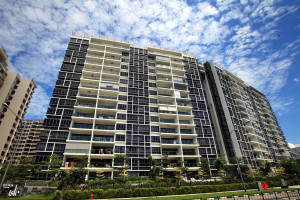What you need to know before upgrading your HDB flat to a condo
By EdgeProp Singapore
/ EdgeProp |
Thinking of upgrading from your HDB flat to a private condo unit? Make sure you cover all the bases before you take the leap.
1) Your MOP period
Are you a Singapore Citizen (SC) who already owns a HDB flat or an Executive Condominium (EC) unit? If so, you must first fulfil the Minimum Occupation Period (MOP) to be eligible to buy private property. The MOP is five years and you will have to stay in the flat throughout the duration before you are allowed to buy private property.
Permanent residents (PRs) will be required to sell their flat within six months of purchasing private property. Owners of private properties or a Housing and Urban Development Company (HUDC) flat are not subject to MOP restrictions.
Advertisement
2) How much you can borrow
Banks assess your loan eligibility based mainly on the following criteria. They are:
i) Total debt servicing ratio (TDSR)
The TDSR dictates that the total loans you need to service in a month should not exceed 60% of your total gross monthly salary. This includes all types of loans, including property, car loans, personal loans and even student loans.
ii) Loan-to-value (LTV) ratio
When you’re buying your first home, you are eligible to borrow up to 75% of the property value if you’re taking up a bank loan. This was reduced from the previous 80% in the latest round of property cooling measures.
When you buy your second property, your loan-to-value (LTV) ratio drops to 45%, for loan tenures up to 30 years. If the loan tenure stretches beyond 25 years or your 65th birthday, your LTV drops to 30%.
3) The minimum cash down payment
When you buy your first home, you are required to pay up to 5% down payment in cash if you use a bank loan. For your second property, you will need to pay up to 25% of your property’s down payment in cash.
This will be measured against the property’s valuation limit, which is determined by the property value or purchase price, whichever is lower.
4) The Additional Buyer’s Stamp Duty (ABSD) you need to pay
Higher ABSD rates were announced on July 5, 2018 to cool the red hot residential property market.
Advertisement
In addition to higher cash down payment and a lower LTV, Singaporeans will now have to pay a 12% ABSD on either the property value or purchase price of a second residential property (whichever is higher). PRs pay 15% ABSD for a second residential property, while foreigners cap off at 20%.
Below are the various ABSD rates for buyers of different profiles and depending on the number of properties they own:
i) Singapore Citizens
1st residential property: Nil
2nd residential property: 12%
3rd and subsequent residential property: 15%
ii) Singapore Permanent Residents
1st residential property: 5%
2nd and subsequent residential property: 15%
iii) Foreigners
1st residential property onwards: 20%
Unfortunately, this means that HDB upgraders will need to pay ABSD when they purchase a condo, as it will be considered a second property.
For example, if you’re a Singapore citizen and you’ve been eyeing a three-bedroom unit at roughly at $1.1 million, you’ll be paying a 12% ABSD rate of $132,000.
However, if you sell your flat within six months of your condo purchase, the ABSD will be reimbursed.
5) Using your CPF for your condo
Under the Central Provident Fund Board’s Private Properties Scheme (PPS), you can use your savings in CPF Ordinary Account (OA) to buy private residential property for occupation or investment.
Advertisement
Your CPF savings can be used to pay the purchase price of the property, or to repay the housing loan in part or whole, and to service monthly housing loan instalments. It can also be used to pay stamp duty, legal costs, survey fees, and other related costs incurred in the property purchase.
However, there is a limit on the amount of CPF savings you can use to buy private residential properties. This limit is determined by a couple of things:
i) Valuation Limit (VL), which is the purchase price or the value of the private property at the time of purchase, whichever is lower. And;
ii) Withdrawal Limit (WL), which is at 120% of the VL. This is the maximum amount of CPF you can use for the private property. Once you have reached the Withdrawal Limit, you will not be allowed to use further CPF savings, and you will need to pay the remaining home loan in cash.
https://www.edgeprop.sg/property-news/what-you-need-know-upgrading-your-hdb-flat-condo
Tags: |


Follow Us
Follow our channels to receive property news updates 24/7 round the clock.
Subscribe to our newsletter
Advertisement
Advertisement
Advertisement
Search Articles

